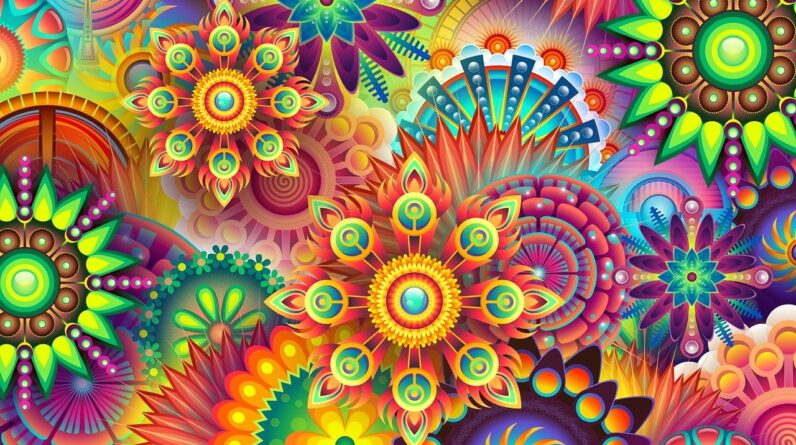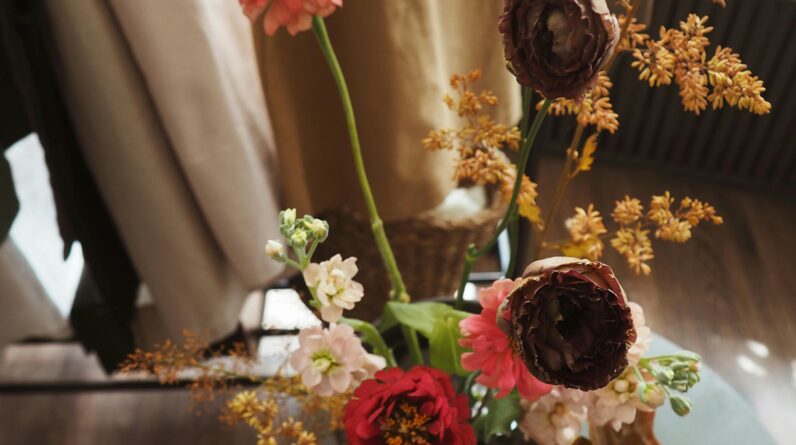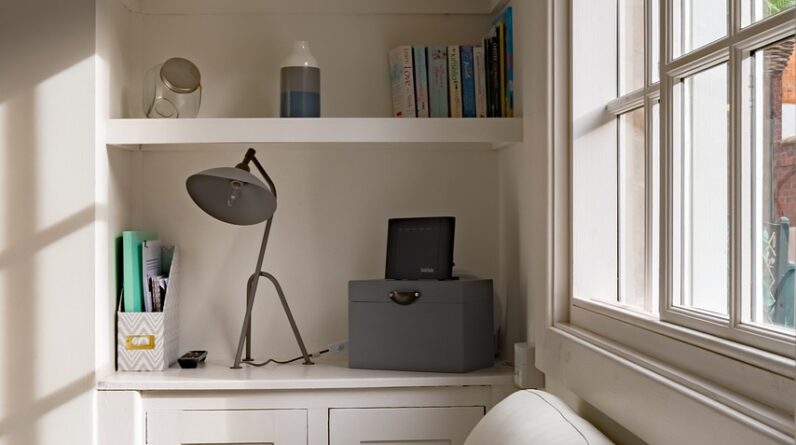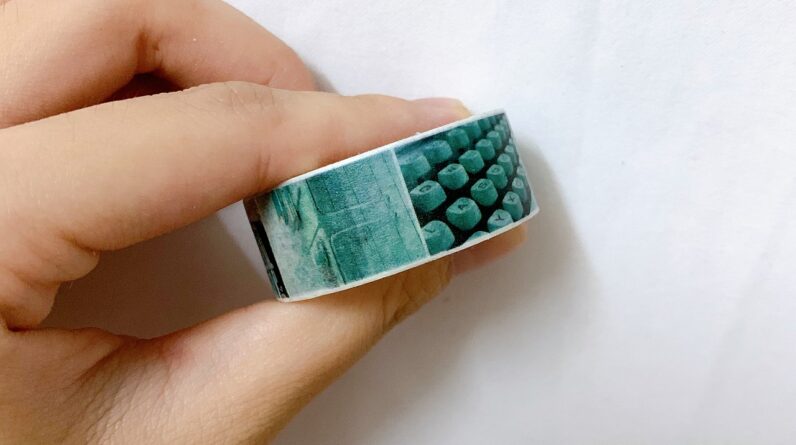
Welcome, friends! In our delightful article, “How to Create Stunning Floral Arrangements,” we’ll walk you through the art of crafting beautiful bouquets that enchant and inspire. Together, we’ll explore the fundamentals of flower selection, color harmony, and arrangement techniques that turn simple blooms into breathtaking works of art. Whether we’re hobbyists or aspiring florists, this guide will leave us brimming with creativity and ready to wow our friends and family with our newfound floral expertise.
Have you ever gazed at a beautiful floral arrangement and wished you could create something just as stunning? Floral design is an art that combines color, texture, and fragrance to create arrangements that can brighten up any space and occasion. Today, we’ll walk you through everything you need to know to design your own gorgeous floral masterpieces.

Understanding the Basics of Floral Arrangements
Before diving in and getting our hands dirty, it’s essential to cover some fundamental principles. These basics will serve as our foundation, ensuring that our arrangements are both beautiful and long-lasting.
The Importance of Balance and Proportion
Balance and proportion are critical in floral design. These principles ensure that our arrangements look aesthetically pleasing and aren’t too top-heavy or lopsided.
- Balance can be symmetrical or asymmetrical. Symmetrical balance is achieved when the arrangement is mirrored on both sides, giving a neat and formal appearance. Asymmetrical balance, on the other hand, is more informal and natural.
- Proportion involves the size of the flowers in relation to the container and the space in which the arrangement will be placed. Generally, the height of the floral arrangement should be about one and a half to two times the height of the container.
Choosing the Right Flowers
Selecting the right flowers is akin to choosing the best ingredients for a recipe. The variety and quality of the flowers can significantly affect the final outcome.
- Seasonality affects availability and cost. For instance, tulips are more affordable in spring, while poinsettias are prevalent during the winter holiday season.
- Flower Types should complement each other. Combining focal flowers (like roses or lilies), filler flowers (such as baby’s breath), and greenery can create a well-rounded aesthetic.
Color Theory in Floral Design
Color is arguably the most noticeable aspect of any arrangement. Using color theory can help us make stunning and harmonious arrangements.
- Complementary Colors (colors opposite each other on the color wheel) can create striking contrasts. For example, pairing purple and yellow flowers can make each hue appear more vibrant.
- Analogous Colors (colors next to each other on the wheel) provide a more uniform and serene look. Think of arrangements with shades of pink, red, and orange.
- Monochromatic Schemes use various shades of a single color, creating a sophisticated and understated arrangement.
Tools and Materials You’ll Need
Before we begin crafting our arrangements, let’s gather the necessary tools and materials. These supply items will make the process smoother and help us achieve professional results.
Essential Tools
Here’s a helpful table to guide you on what tools you’ll need and their specific uses:
| Tool Name | Purpose |
|---|---|
| Floral Scissors | Cutting stems neatly without crushing them |
| Floral Knife | For more precise cuts and trimming |
| Floral Foam | Holding flowers in place within containers |
| Wire Cutters | Cutting floral wire and thicker stems |
| Pruners | For cutting and shaping woody stems |
| Floral Tape | Securing flowers and creating structure |
| Containers | Vases, pots, or any vessel to hold your arrangement |
Recommended Materials
The materials we choose will add to the overall aesthetic and functionality of our arrangements.
- Floral Foam: Available in various shapes and sizes, this sponge-like material holds water and keeps our flowers in place.
- Floral Wire: Useful for reinforcing stems or creating intricate designs.
- Ribbons and Decorative Elements: Adds a finishing touch and personal flair to our arrangement.
- Water and Preservatives: Keeping flowers hydrated and prolonging their freshness.
Step-by-Step Guide to Creating a Floral Arrangement
Now that we have a solid understanding of the basics and our materials gathered, let’s dive into the step-by-step process of creating a stunning floral arrangement.
Step 1: Choosing Your Flowers and Greenery
Selecting a variety of flowers and greenery is the first and most crucial step. Aim to choose:
- Focal Flowers: These are the stars of your arrangement. Examples include roses, peonies, and lilies.
- Secondary Flowers: Supporting roles in the arrangement, such as carnations or daisies.
- Filler Flowers: Smaller blossoms like baby’s breath or wax flowers.
- Greenery: Foliage like eucalyptus, ferns, or ivy adds texture and depth.
Step 2: Preparing Your Flowers
Proper preparation prolongs the life of your flowers and enhances their appearance.
- Trim Stems: Using floral scissors, cut stems at a 45-degree angle. This angle maximizes water absorption.
- Remove Leaves: Eliminate any leaves that will sit below the waterline in your vase. Leaves in water can rot and promote bacteria growth.
- Hydrate: Place the prepared flowers in a clean container with water and a floral preservative for at least an hour before arranging.
Step 3: Selecting and Preparing Your Container
Choose a container that complements the style and color scheme of your flowers.
- Cleanliness: Ensure that the container is clean to prevent bacterial growth.
- Supporting Mechanisms: Use floral foam for wider containers or a flower frog for smaller vases. These elements help to keep your stems in place.
Step 4: Arranging the Greenery
Start by creating a base with your greenery. This provides structure and a framework for your flowers.
- Even Distribution: Arrange the greenery evenly around the container, making sure to crisscross the stems for support.
- Balance: Ensure that the height and size of the greenery are proportionate to the flowers you plan to add.
Step 5: Adding Focal Flowers
Place your focal flowers next. These blooms should be the most prominent in your arrangement.
- Placement: Insert the focal flowers at different heights and angles to create a dynamic and natural look.
- Odd Numbers: Arranging focal flowers in odd numbers (like 1, 3, or 5) can help maintain a more organic and less structured appearance.
Step 6: Inserting Secondary Flowers
Secondary flowers help fill in the arrangement and add variety.
- Layering: Place these flowers in a layered fashion, weaving them between the focal flowers.
- Contrast: Use flowers with different shapes and colors to create visually interesting contrasts.
Step 7: Adding Filler Flowers and Extra Greenery
Finally, use filler flowers and any additional greenery to complete your arrangement.
- Texture and Fullness: Fill in any gaps to add fullness and texture.
- Final Adjustments: Step back and assess the overall balance, making any necessary tweaks to ensure harmony in your arrangement.
Tips for Maintaining Your Floral Arrangements
Creating a stunning floral arrangement is just the beginning. You’ll want to keep it looking fresh and beautiful for as long as possible. Here are some tips to help maintain your blooms.
Hydration and Fresh Water
Fresh water is key to keeping our flowers vibrant.
- Change Water Regularly: Check the water level daily and change it every 2-3 days. Always add floral preservative to the new water.
- Trim Stems: Re-cut the stems every few days to keep them absorbing water effectively.
Ideal Environment
The placement of your arrangement can influence its longevity.
- Temperature: Keep flowers in a cool environment, away from direct sunlight and heat sources.
- Air Circulation: Good air circulation can help prevent mold and rot but avoid placing flowers in drafty areas.

Advanced Techniques in Floral Design
Once you’re comfortable with the basics, you may want to explore more advanced techniques to elevate your floral designs further.
Using Floral Foam for Complex Structures
Floral foam can be invaluable when creating complex structures or precise designs.
- Soak the Foam: Soak the foam thoroughly but avoid pushing it underwater as it can create air pockets.
- Secure the Foam: Make sure the foam is securely fitted in the container to keep the arrangement stable.
Wiring and Taping
Wiring and taping are essential for more intricate designs and ensuring that delicate or heavy flowers stay in place.
- Wiring: Use floral wire to support weak stems or to add architectural elements like loops and bends.
- Taping: Wrap floral tape around the wired stems to camouflage the wire and add a natural look.
Seasonal Floral Arrangements
Different seasons offer unique opportunities to use specific flowers and themes. Let’s take a look at how to harness the beauty of each season in our floral designs.
Spring Arrangements
Spring is all about fresh, vibrant colors and delicate blooms.
- Flowers: Daffodils, tulips, hyacinths, and irises.
- Greenery: Fresh and light greens like ferns and ivy.
- Themes: Pastel colors and soft, romantic styles are ideal for spring arrangements.
Summer Arrangements
Summer offers a plethora of bold, bright flowers that can create striking arrangements.
- Flowers: Sunflowers, dahlias, daisies, and zinnias.
- Greenery: Lush greens such as hosta leaves or tropical foliage.
- Themes: Go for vibrant colors and large, exuberant bouquets.
Autumn Arrangements
Autumn flowers bring warm, rich hues and textures.
- Flowers: Chrysanthemums, marigolds, and asters.
- Greenery: Use elements like autumn leaves and berried branches.
- Themes: Warm oranges, yellows, and reds dominate, with rustic and earthy designs.
Winter Arrangements
Winter might seem sparse, but it holds its own unique charms.
- Flowers: Amaryllis, poinsettias, and holly.
- Greenery: Evergreens like pine, fir, and cedar.
- Themes: Use deep reds, whites, and greens, incorporating elements like pinecones and berries.

Popular Flower Arrangement Styles
Understanding different styles of flower arrangements can help you better choose the right look for various occasions and personal preferences.
Traditional Style
Traditional arrangements are often symmetrical and balanced, featuring a mix of focal and filler flowers. Think of classic bouquets with roses, lilies, and baby’s breath, typically displayed in elegant vases.
Modern Style
Modern designs emphasize minimalism and unique forms. These arrangements often use fewer flowers but focus on bold, striking designs with clean lines and unexpected elements.
Garden Style
Garden-style arrangements are lush and overflowing, mimicking the natural growth of flowers in a garden. These often include a mix of wildflowers and greenery, assembled in a loose, informal manner.
Ikebana
Ikebana is the Japanese art of flower arrangement, focusing on harmony, balance, and simplicity. This style often emphasizes minimalism and the use of empty space, creating elegant and thoughtful designs.
Common Mistakes and How to Avoid Them
Even experienced floral designers sometimes make mistakes. Here are some common pitfalls and how to avoid them.
Overcrowding
- Solution: Less can be more. Allow each flower room to breathe and be seen.
- Tip: Focus on creating a balanced composition and avoid stuffing too many elements into one arrangement.
Ignoring Proportion
- Solution: Follow the 1.5 to 2 times rule for the height of the flowers relative to the container.
- Tip: Always consider the size of the container, the flowers, and the space around the arrangement.
Poor Water Management
- Solution: Keep an eye on water levels and change out the water regularly.
- Tip: Using preservatives can extend the life of your flowers, but clean water and new cuts are equally important.
DIY Floral Arrangements for Special Occasions
Floral arrangements can add a personal touch to any special occasion. Here are some ideas for DIY arrangements for different events.
Weddings
- Bouquets: Create custom bridal bouquets with a mix of the bride’s favorite flowers.
- Centerpieces: Use seasonal flowers and greenery to create elegant table centerpieces.
Birthdays
- Personalized Bouquets: Use the recipient’s birth flower or favorite blooms in a celebratory arrangement.
- Decor: Consider crafting small flower crowns or boutonnieres for guests.
Holidays
- Christmas: Combine evergreens, red berries, and white flowers for a festive arrangement.
- Easter: Go for soft pastels and spring blooms like tulips and lilies.
Conclusion
Creating stunning floral arrangements is an art that anyone can learn with a bit of practice and creativity. From understanding the basics of proportion and color theory to mastering more advanced techniques like wiring and taping, there are endless opportunities for expressing personal style and celebrating the beauty of nature.
So why not gather some fresh flowers, get your tools ready, and start crafting your own beautiful arrangements? Whether it’s for a special occasion or just to brighten up your home, the joy of floral design is something truly special.







